Potrebujeme váš súhlas na využitie jednotlivých dát, aby sa vám okrem iného mohli ukazovať informácie týkajúce sa vašich záujmov. Súhlas udelíte kliknutím na tlačidlo „OK“.
ASTM D6728-11
Standard Test Method for Determination of Contaminants in Gas Turbine and Diesel Engine Fuel by Rotating Disc Electrode Atomic Emission Spectrometry
Automaticky preložený názov:
Štandardná skúšobná metóda pre stanovenie cudzorodých látok v plynovou turbínou a motorovej nafty podľa rotujúceho disku elektródy pre atómovú emisnú spektrometriou
NORMA vydaná dňa 1.10.2011
Informácie o norme:
Označenie normy: ASTM D6728-11
Poznámka: NEPLATNÁ
Dátum vydania normy: 1.10.2011
Kód tovaru: NS-36294
Počet strán: 7
Približná hmotnosť: 21 g (0.05 libier)
Krajina: Americká technická norma
Kategória: Technické normy ASTM
Kategórie - podobné normy:
Anotácia textu normy ASTM D6728-11 :
Keywords:
ash-forming materials, contaminant, disc electrode, emission spectrometry, fuel analysis, RDE, rod electrode, rotating disc electrode spectrometer, trace metals, ICS Number Code 75.160.20 (Liquid fuels)
Doplňujúce informácie
| Significance and Use | ||||||||||||
|
Operating experience of gas turbines and diesel engines has shown that some of the ash-forming substances present in a fuel can lead to high temperature corrosion, ash deposition, and fuel system fouling. Ash-forming materials may be in a fuel as oil-soluble metallo-organic compounds as water-soluble salts or as solid foreign contamination. Their presence and concentration varies with the geographical source of a crude oil and they are concentrated in the residual fractions during the refining process. Although distillate fuel oils are typically contaminant free, ash-forming materials may be introduced later in the form of salt-bearing water or by contact with other petroleum products during transportation and storage. Specifications of gas turbine and diesel engine fuels and the significance of contamination and trace metals are detailed in Specifications D2880 and D975. Pre-conditioning of the fuel before it reaches the gas turbine or diesel engine has become a prerequisite for installations that use heavy petroleum fuel, and also for sites that use light distillate fuel oils. On-site fuel analysis to determine the extent of contamination is an integral part of a fuel quality management program. It is used first to determine the extent of the required treatment, and later, the effectiveness of the treatment. It starts with the delivery of the fuel, continues throughout fuel handling and ends only as the fuel is injected into the turbine or engine. Fuel contamination specifications vary among the different gas turbine manufacturers. However, without exception, each requires that contaminants must be as low as possible. In most power generation installations, it is the owner who has the responsibility of verifying fuel cleanliness in compliance with the turbine manufacturer's warranty specifications. This leads to an on-site analytical instrument performance requirement of below 1.0 mg/kg for several elements. |
||||||||||||
| 1. Scope | ||||||||||||
|
1.1 This test method covers the determination of contaminants and materials as a result of corrosion in gas turbine or diesel engine fuels by rotating disc electrode atomic emission spectroscopy (RDE-AES). 1.1.1 The test method is applicable to ASTM Grades 0-GT, 1-GT, 2-GT, 3-GT, and 4-GT gas turbine fuels and Grades Low Sulfur No. 1-D, Low Sulfur No. 2-D, No. 1-D, No. 2-D, and No. 4-D diesel fuel oils. 1.1.2 This test method provides a rapid at-site determination of contamination and corrosive elements ranging from fractions of mg/kg to hundreds of mg/kg in gas turbine and diesel engine fuels so the fuel quality and level of required treatment can be determined. 1.1.3 This test method uses oil-soluble metals for calibration and does not purport to quantitatively determine or detect insoluble particles. 1.2 The values stated in SI units are to be regarded as standard. No other units of measurement are included in this standard. The preferred units are mg/kg (ppm by mass). 1.3 This standard does not purport to address all of the safety concerns, if any, associated with its use. It is the responsibility of the user of this standard to establish appropriate safety and health practices and determine the applicability of regulatory limitations prior to use. |
||||||||||||
| 2. Referenced Documents | ||||||||||||
|
Podobné normy:
Historická
1.11.2012
Historická
1.8.2012
Historická
15.4.2012
Historická
1.7.2010
Historická
1.10.2010
Historická
1.5.2014
Odporúčame:
EviZak - všetky zákony vrátane ich evidencie na jednom mieste
Poskytovanie aktuálnych informácií o legislatívnych predpisoch vyhlásených v Zbierke zákonov od roku 1945.
Aktualizácia 2x v mesiaci !
Chcete vedieť viac informácii ? Pozrite sa na túto stránku.


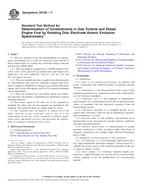
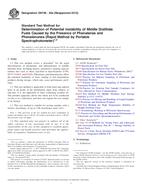 ASTM D6748-02a(2012)..
ASTM D6748-02a(2012)..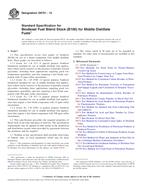 ASTM D6751-12
ASTM D6751-12 ASTM D6793-02(2012)..
ASTM D6793-02(2012)..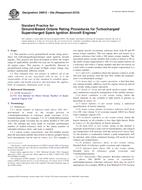 ASTM D6812-04a(2010)..
ASTM D6812-04a(2010)..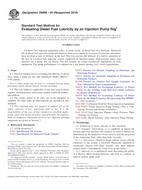 ASTM D6898-03(2010)..
ASTM D6898-03(2010)..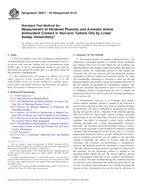 ASTM D6971-09(2014)..
ASTM D6971-09(2014)..
 Cookies
Cookies
